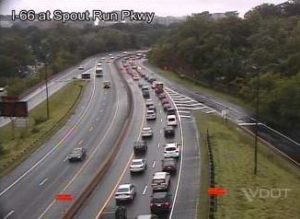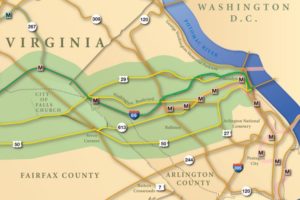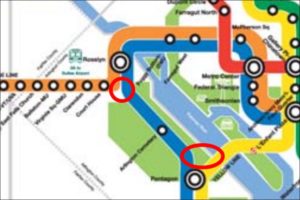 Widening I-66 and Route 50 inside the Beltway are among the options for relieving congestion on the I-66 corridor currently being studied by the Virginia Department of Transportation.
Widening I-66 and Route 50 inside the Beltway are among the options for relieving congestion on the I-66 corridor currently being studied by the Virginia Department of Transportation.
The “I-66 Multimodal Study,” as its called, began in July 2011. Study organizers held public meetings in December 2011, are scheduled to hold additional public meetings in April, and are expected to wrap up in May with a final report.
“This study will identify a range of multimodal and corridor management solutions (operational, transit, bike, pedestrian, and highway) that can be implemented to reduce highway and transit congestion and improve overall mobility within the I-66 corridor, between I-495 and the Theodore Roosevelt Bridge,” VDOT says on its web site.
Currently, I-66 is HOV 2+ in the peak direction during peak hours, with no other restrictions on the reverse peak direction or during off-peak hours. With the exception of the recently “spot improvements,” I-66 consists of two travel lanes in each direction.
Among the theoretical options the study is considering for I-66, as outlined at a recent public meeting:
- A. No new I-66 lanes. Peak direction to be bus/HOV 3+ only during peak hours. Reverse peak direction to be bus/HOV 2+ only during peak hours. No off-peak restrictions.
- B. Convert I-66 into an electronically tolled bus/HOV/high occupancy toll (HOT) highway. Single occupancy vehicles and HOV-2 vehicles would be tolled in both directions, 24/7. Buses and HOV 3+ vehicles would not be tolled. Optionally, a third travel lane may be added to I-66 in each direction.
- C1. Lane added in each direction on I-66. Peak direction to be bus/HOV 3+ only during peak hours. One reverse peak lane to be bus/HOV 2+ only during peak hours. No off-peak restrictions.
- C2. Lane added in each direction on I-66. Peak direction to be bus/HOV 3+ only during peak hours. All reverse peak lanes to be bus/HOV 2+ only during peak hours. No off-peak restrictions.
Additionally, the study is examining the following options for other roads, means of transportation and services:
- Enhance Route 50 by applying access management principles, adding a bus-only lane in each direction (either new lane or converted shoulder), possibly allowing general traffic on new bus lane during off-peak hours.
- Improve Metro service by adding two interline connections: from the Orange Line to the Blue Line between the Rosslyn/Courthouse and Arlington Cemetery stations, and from the Blue Line to the Yellow Line from the L’Enfant Plaza and Arlington Cemetery/Pentagon stations. Additional connections would “provide operating flexibility for Metrorail and a direct connection between I-66/Dulles Corridor and Pentagon/South Arlington.”
- Add Priority Bus service along I-66, Lee Highway and Route 50 corridors, with 10-minute peak period frequency.
- Implement Transportation Demand Management strategies.
- Enhance or add bike and pedestrian trails, parking (at transit stations) and transit access. Expand bikesharing system.
Anyone with questions about the study can email [email protected] or call 1-855-788-3966 (855-STUDY66).



